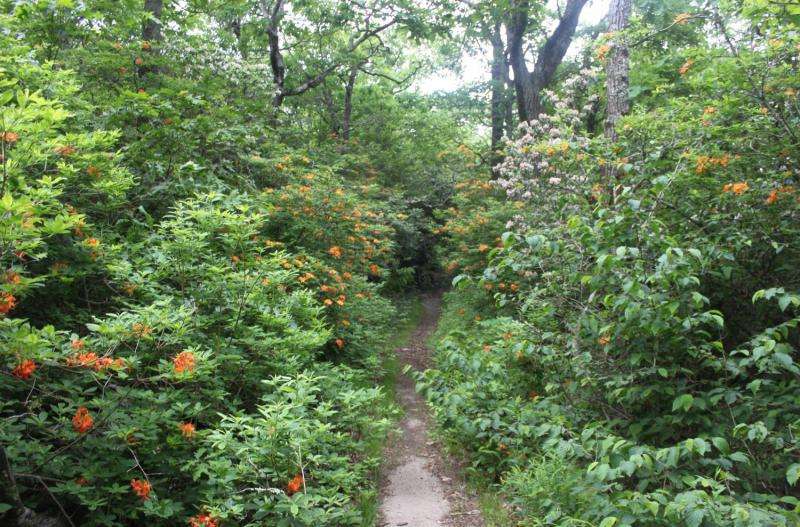Study reveals how eastern US forests came to be

Plant hunters traveling between North America and Asia in the 1800s noticed a bizarre pattern: collections they brought back from China and Japan were strikingly similar in their leaves, flowers and fruits to plants from southern Appalachia. A new analysis of DNA studies shows that over half of all the trees and shrubs in the southern Appalachians can trace their ancestry to relatives a half a world away in Asia.
Most of the rest likely arose within North America, the researchers say.
"Our southern Appalachian tree species split from their closest relatives in eastern Asia at many different times over the last 65 million years," said lead author Paul Manos, a biology professor at Duke University. "It didn't happen all at once."
The temperate forests of the southern Appalachians that stretch southwest to northeast from Georgia to Virginia are home to more tree species than anywhere else in North America. Species range from spruces, firs, birches, oaks and maples to magnolias, hickories, hollies and hemlocks.
Fossil evidence suggests that similar forests were once widespread throughout the Northern Hemisphere, when Asia, Europe and North America were still joined in the supercontinent called Laurasia.
But when the climate of Laurasia began to cool, only the forest remnants in what are now China, Japan, Appalachia and small parts of Europe survived the periods of climate change and glaciation that followed, leaving nothing but fossils in the thousands of miles in between.
Manos and Duke doctoral student José Meireles combed the scientific literature to reconstruct how the biodiversity of U.S. eastern forests arose.
By combining results from molecular studies of more than 250 species of trees and shrubs in the southern Appalachians, the researchers were able to pinpoint when and where each species and its closest cousin went their separate ways.
Overall, the results suggest that half of the trees and shrubs in eastern North America can trace their relatives to eastern Asia.
The alternate-leaved dogwood, for example, split from its closest relatives in eastern Asia some 22 million years ago. That was about when much of Laurasia's deciduous forests started to die out, after which the continents were only intermittently connected by land bridges—shallow parts of the ocean floor that were exposed when ice age glaciers tied up vast amounts of ocean water and sea levels were lower.
A quarter of the tree species we see in the southern Appalachians today likely arose within eastern North America, such as hawthorns and oaks. Most of the rest arose in western North America and eastern Mexico and relatively few in Europe, the researchers say.
"There are tons of connections to eastern Asia," Manos said.
The results appear online in the American Journal of Botany.
More information: "Biogeographic Analysis of the Woody Plants of the Southern Appalachians: Implications for the Origins of a Regional Flora," P. Manos and J. E. Meireles. American Journal of Botany, May 2015. DOI: 10.3732/ajb.1400530
Journal information: American Journal of Botany
Provided by Duke University

















